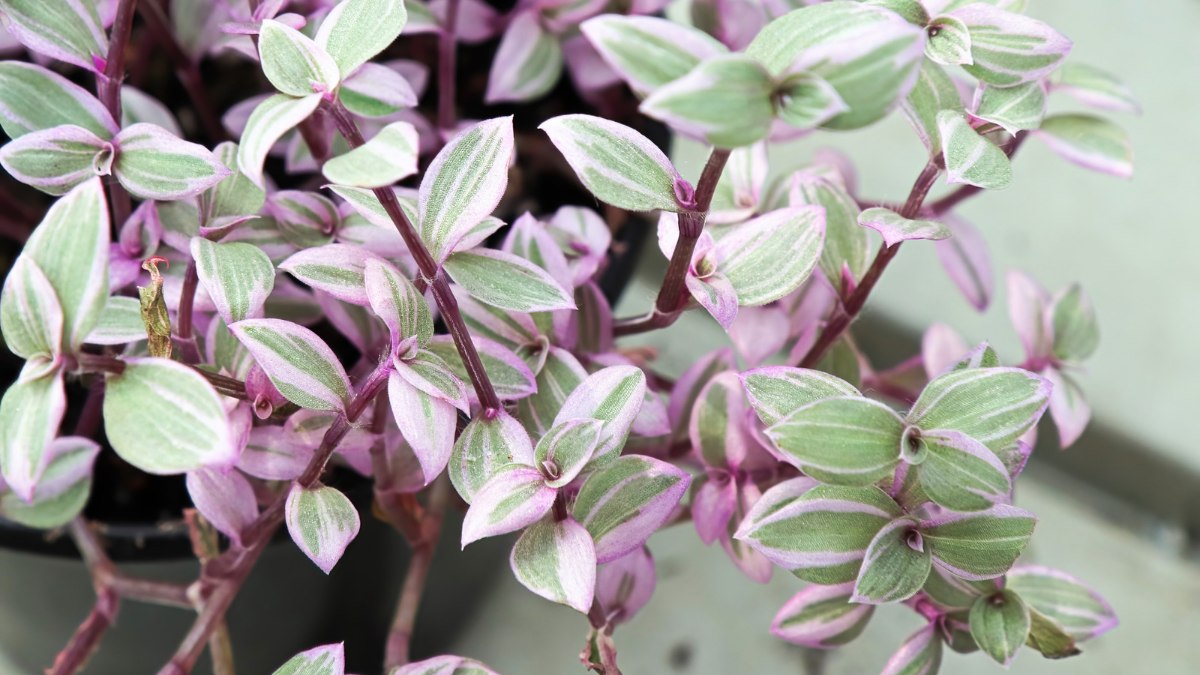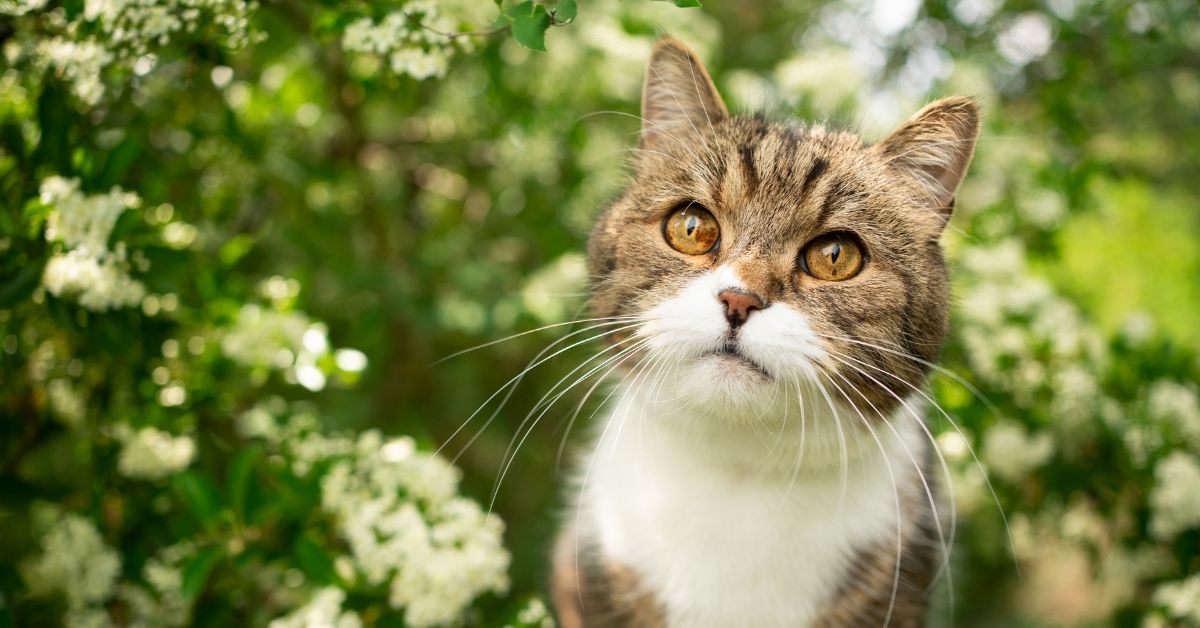Proper care of Callisia Repens Pink Panther is essential for its healthy growth. Here are some tips to help you become a better planter:
The Callisia repens Pink Panther (Jacq.) L (AKA creeping inchplant, Bolivian jew, Waterweed, Pink lady, Baby sun rose or turtle vine) plant is a wonderful option for those seeking an attractive and easy-to-care-for indoor plant that can enhance the ambiance of any room. This petite indoor plant showcases delicate lavender and light green foliage that can bring a vibrant touch to any indoor environment, be it your residence, workspace, or indoor garden. In order to promote optimal growth and health of your pink panther, it is imperative to provide it with adequate care.
Understanding the Unique Features of the Pink Panther Plant
What makes the Pink Panther Plant so unique? It’s all about the leaves. This plant is characterized by bands of creamy pink, silver, and dark green that create a stunning visual contrast. The tips of its leaves are delicately serrated, enhancing its tropical appeal.
The Pink Panther Plant’s inflorescence is another distinct feature. During its blooming cycle, the plant produces a tall, central stalk with a cluster of purple flowers, cloaked in striking, pink bracts. This combination of colors is why the plant earned its moniker, the ‘Pink Panther’.
Optimum Growth Conditions for the Pink Panther Plant

Like most bromeliads, the Pink Panther Plant thrives in bright, indirect sunlight. However, it can also tolerate a fair amount of shade. Being a tropical plant, it prefers higher humidity and warmer temperatures, ideally between 60 to 80 degrees Fahrenheit. It can tolerate cooler conditions, but growth may slow.
Here’s a quick care guide for Callisia Repens Pink Panther:
For optimal care of your Callisia Repens Pink Panther plant, follow these guidelines:
Ensure that your pink panther plant is positioned in a well-lit area within your home, a few feet away from any windows. It is recommended to provide your plant with one hour of sunlight daily to preserve its color. However, it is important to avoid excessive exposure to sunlight as it may result in leaf burn.
It is recommended to water your pink panther plant once every seven to ten days. Before watering, it is important to check the soil and ensure that the top layer is dry. It is recommended to thoroughly saturate the plant with water every time you refill your watering can.
The ideal soil for Callisia pink panther plant is well-draining type of soil. To enhance soil drainage, perlite or vermiculite can be incorporated. However, any type of potting soil will suffice. Incorporating organic material such as coconut coir can enhance soil drainage.
Pink Panther plants benefit from periodic fertilization. It is recommended to apply fertilizer sparingly, typically once every few months during periods of warm or mild weather. An optimal approach is to incorporate a basic liquid fertilizer into your watering regimen on a monthly basis.
The most convenient method for obtaining fresh pink panther plants is through stem cuttings and subsequent planting. Typically, the rooting process for cuttings takes approximately four weeks. One method to propagate plants is through water propagation, where cuttings are placed in a container of water for approximately seven days to develop roots.
The Callisia Repens Pink Panther, commonly referred to as the Callisia Pink Panther or Pink Panther plant, is a semi-succulent plant that thrives in optimal growing conditions and has a rapid growth rate. Propagation is a simple process, allowing you to create new plants and enhance the aesthetic appeal of various spaces in your home or office.
Light
The Callisia pink panther plant thrives in moderate sunlight and prefers not to be exposed to excessive amounts of it throughout the day. It is recommended to locate a well-lit window in your residence, such as a south-facing window during the winter season.
Providing adequate daily sunlight is crucial in preserving the vibrant lavender hues of the leaves. However, it is important to exercise caution as excessive exposure to sunlight can lead to leaf scorching. Placing your pink panther in a dark room may not be conducive to its growth and development. The plant will undergo a survival response and cease leaf production. The plant may undergo leaf abscission as a mechanism to conserve energy. A well-lit bathroom window with higher humidity levels compared to other areas is an excellent choice.
Water
The pink panther is classified as a succulent or semi-succulent, despite its appearance resembling that of a leafy indoor plant. Being a semi-succulent, the plant requires moderate watering and appreciates intervals between each watering session. It is recommended to thoroughly saturate the soil when watering your Callisia and wait until the top layer of soil is fully dried before watering it again. Overwatering can lead to waterlogged soil, which is detrimental to the health of these plants and may cause them to wilt and eventually perish.
Soil
The Callisia pink panther thrives in well-draining soil, much like other low-maintenance plants. In order to enhance the soil’s drainage, perlite or vermiculite can be incorporated. However, the plant does not exhibit a significant preference for soil type. Either cactus-specific or general houseplant potting soil will suffice. Ensure proper drainage of the soil after watering before repotting the pink panther, and you can even utilize soil from your garden. In order to enhance soil drainage, it is recommended to incorporate organic matter such as coconut coir.
Fertilizer
It is recommended to provide Pink Panther plants with intermittent feeding while restricting the use of fertilizers to a frequency of once every few months during warm or moderate weather conditions. During the winter season, Callisia does not exhibit active growth. Therefore, it is not advisable to apply fertilizer to them in December as it would be futile. For optimal growth of your pink panther, it is recommended to select a basic liquid fertilizer that can be added to your watering can on a monthly basis. The optimal sunlight exposure is crucial for maintaining the health of a pink panther plant, whereas the frequency of fertilizer application is of secondary importance.
Propagation
One simple propagation method for pink panther plants involves taking stem cuttings and rooting them in soil. Typically, it takes approximately four weeks for the cutting to establish new roots. Once the stem has been cut, it can be placed in a pot of soil after a few days, and the end will naturally heal. It is advisable to let the stem heal before rooting to prevent bacterial infection that may harm the cutting.
You can propagate cuttings by hydroponic means, where the cutting is placed in a container of water for approximately a week until roots develop. Once you observe roots emerging in the water, it is recommended to transplant the plant into a smaller pot. When your pink panther plant produces a pup, it can be separated and used to propagate a new plant. Experienced gardeners may attempt to cultivate Callisia from seeds, although the process may require a significant amount of time and patience to yield desirable outcomes.
Propagation Secrets
Pink Panther Plants reproduce through pups, or small plants that grow around the base of the mother plant. These can be removed and planted separately once they’re about one-third the size of the mother plant. This method of propagation can keep your Pink Panther colony thriving year after year.

Troubleshooting
Overwatering or underwatering can both have negative effects on plant health. It is important to find the right balance and water plants according to their specific needs.
The most common issue faced by Callisia pink panther is related to watering, either due to excessive or insufficient moisture. It’s crucial to adjust the watering schedule of your newly acquired Callisia plant as per the soil moisture level. Keep a close eye on the soil and modify the watering frequency accordingly. It is important to take note of the fluctuations in humidity levels throughout the year as this may necessitate adjustments to the watering regimen. Does your region experience cold and arid conditions in the winter season?
You may want to relocate your plant to a well-lit bathroom window to maintain its moisture levels or increase the frequency of watering. Overwatering can cause the plant’s leaves to turn brown and drop off. Insufficient watering can also cause the plant to display similar symptoms. Observing excessive leaf drop in your Callisia may indicate the need to fine-tune your watering frequency.
Inadequate or excessive sunlight can affect the growth and development of plants. It is important to ensure that plants receive the appropriate amount of sunlight to thrive.
Proper watering frequency is crucial for the health of your pink panther plant. However, if you notice a loss of leaves and a lack of vitality, it may be an indication of inadequate or excessive sunlight exposure. Providing the plant with a moderate amount of sunlight, ideally an hour per day (although half an hour is sufficient), is crucial for preserving the lavender hue of the leaves.
However, excessive exposure to sunlight can be detrimental to the plant’s survival. Conversely, a Callisia situated in a low-light area may also encounter significant issues. It is crucial to monitor the sunlight patterns and seasonal changes to ensure the pink panther receives adequate sunlight, as it is unable to produce its own food. If your pink panther appears to be receiving insufficient sunlight during the winter season, do not hesitate to relocate it.
Potential Pests and Problems
Despite its resilience, the Pink Panther Plant isn’t immune to pests. Mealybugs, scales, and spider mites can sometimes be an issue. Regular inspections and the use of insecticidal soap can help manage these potential pests.
Styling with Pink Panther Plant
This plant’s dramatic colors make it a show-stopper in interior design. Pair it with neutral, white pots for a striking contrast, or place it against a backdrop of dark, glossy leaves for a stunning display. Whether positioned as a centerpiece or tucked away in a corner, the Pink Panther Plant is sure to elevate any space with its exotic allure.
Conclusion
The Callisia repens Pink Panther plant is a stunning and low-maintenance indoor plant that can enhance the aesthetic appeal of your living space, workplace, or indoor garden. By adhering to the aforementioned guidelines, you can guarantee the longevity and vitality of your pink panther plant.
FAQ
Are pink panther plants easy plants?
Yes. Pink Panther plants are low-maintenance and require minimal care. These plants exhibit high drought tolerance and have low fertilizer requirements. Ensure that the plants receive ample bright, indirect light and maintain a consistent watering schedule.
Why is my pink panther plant not pink?
Overwatering is a common issue with Callisia repens. Overwatering can lead to root and stem rot, which is characterized by a darkening of the affected areas and a soft, mushy texture. Adequate exposure to sunlight is crucial for maintaining the vibrant pink hue of Callisia.
Do pink panther plants like humidity?
Callisia Pink Panther does not necessitate supplementary humidity. The primary mode of water absorption for plants is through their roots, making watering the soil the optimal method for providing humidity to your plants.
Are pink panther plants safe for pets?
No, pink panther plants are not safe for pets. They contain a toxic substance called **lycorine**, which can cause nausea, vomiting, and diarrhea if ingested by humans or animals. In severe cases, it may even lead to seizures or heart arrhythmias. Therefore, you should keep this plant out of reach of your pets and children. If you suspect that your pet has eaten any part of this plant, you should contact your veterinarian immediately.


